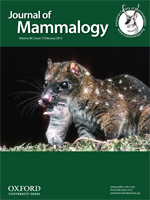We show in the present study that variations in the rates of survival and recruitment of the agile gracile opossum (Gracilinanus agilis) are predominantly influenced by its life history instead of the variation in primary productivity that is common in the Brazilian Cerrado. For 5 years we monitored a population of G. agilis in a riparian forest running through the Cerrado and assessed the relationship between survival and breeding season, as well as the relationship between recruitment and seasons (dry and rainy). We also tested for a relationship between these rates and variations in primary productivity. The survival of males was better predicted by reproductive season than primary productivity and survival decreased after the reproductive season. Females showed a similar pattern. Our data show the reproduction of G. agilis is seasonal, with recruitment in the rainy season. The demographic analysis made in the present study suggests the adoption of a semelparous strategy in this species.
How to translate text using browser tools
1 February 2015
Primary productivity and the demography of Gracilinanus agilis, a small semelparous marsupial
Daniele Bilate Cury Puida,
Adriano Pereira Paglia
ACCESS THE FULL ARTICLE

Journal of Mammalogy
Vol. 96 • No. 1
February 2015
Vol. 96 • No. 1
February 2015
age structure
capture—mark—recapture
Didelphidae
food availability
population dynamics
semelparity




